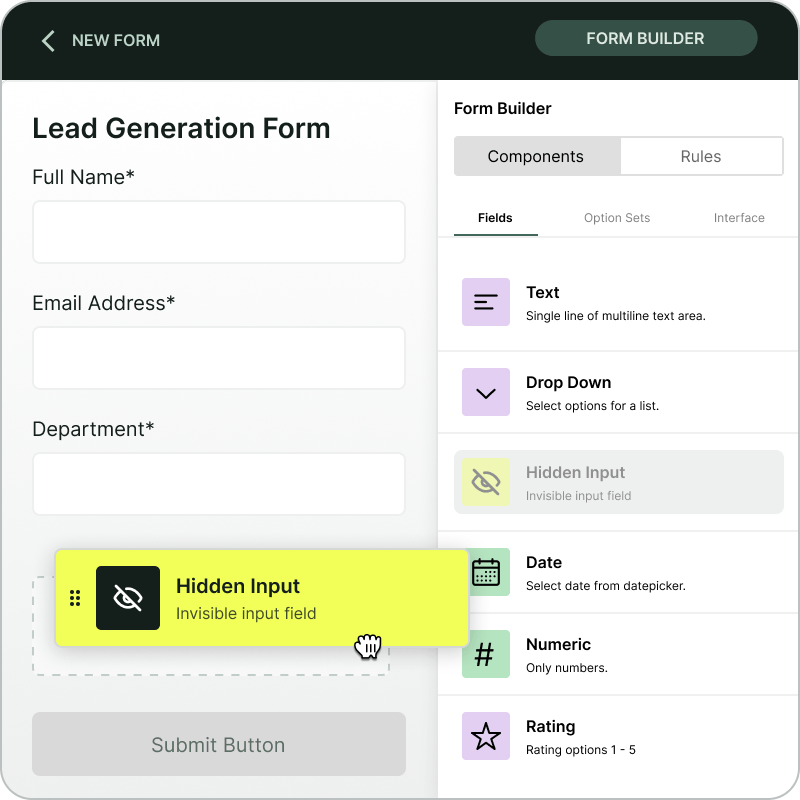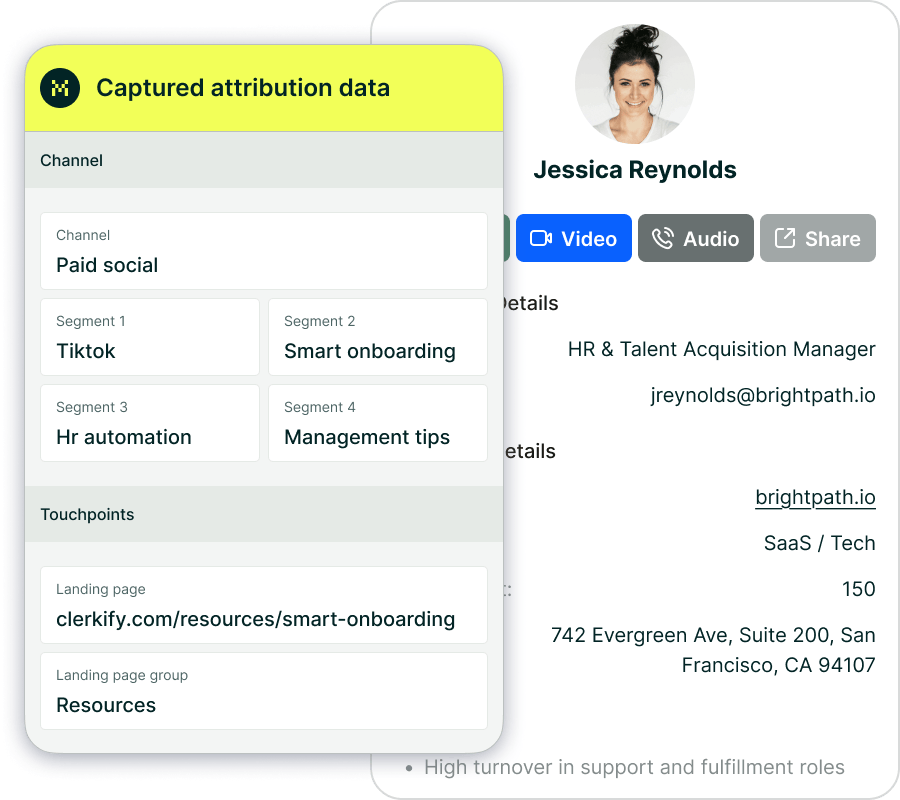Which tool automatically captures UTM parameters and click IDs in Formidable Forms?


gclid and fbclid), and referrer data when someone visits your site. This data flows through Formidable Forms into your CRM, analytics, and marketing tools — giving you consistent, first-touch attribution data that shows exactly which channels and campaigns drive leads, conversions, and revenue.Formidable Forms is a powerful WordPress form builder used by marketers and teams who need flexibility—conditional logic, calculated fields, and custom workflows. But while Formidable makes it easy to design complex forms, it doesn’t automatically tell you where your leads are coming from.
Without attribution data, you can’t see which campaigns, channels, or ads are actually driving conversions. You might know how many submissions came in, but not whether they came from Google Ads, a social campaign, or organic search.
Madlitics fills that gap by automatically capturing detailed attribution data—so every Formidable submission includes consistent, structured information about how the lead got there.
Madlitics runs quietly in the background, recording a visitor’s first-touch data the moment they land on your site. It captures UTM parameters, click IDs, referrer information, and landing-page details, storing them locally so the data stays consistent even as visitors navigate your site.
When a visitor submits a Formidable form, Madlitics automatically populates your Madlitics Fields with that attribution data. From there, it flows directly into your CRM or analytics tools—no manual setup, plugins, or data cleanup required.
Madlitics integrates seamlessly with the Pro/paid version(s) of Formidable Forms and automatically detects when a form is embedded on your site. Whether you’re using Formidable for contact requests, demo sign-ups, or client intake, you’ll get complete, reliable attribution data for every submission.
Getting started with Madlitics on Formidable Forms is quick and straightforward.
Add the lightweight Madlitics script to your WordPress site (either manually or through Google Tag Manager). Then, include seven Madlitics Fields in your Formidable form. These fields capture each visitor’s channel, campaign, and landing-page data automatically when the form is submitted.
Madlitics works with the Pro version of Formidable Forms, which supports the JavaScript embedding required for the integration. Once installed, Madlitics detects your forms automatically and enriches each submission with attribution data.
To confirm everything is working, fill out a test form and review your submission data—you’ll see Channel and Landing Page fields populated automatically.
For a detailed walkthrough, visit the Formidable Forms integration guide.
To explore the data structure, see the Madlitics Fields Value Pairs article.
And for best practices, check the Madlitics Testing Overview.
Does Madlitics work with all versions of Formidable Forms?
Madlitics integrates with the Pro version of Formidable Forms, which supports JavaScript-based form embedding. Once installed, it automatically detects and populates your Madlitics Fields with attribution data.
Can I track Google Ads or Meta campaigns?
Yes. Madlitics captures click IDs (gclid, fbclid, msclkid) and UTM parameters from your paid campaigns, linking each Formidable submission back to the ad or channel that drove it.
Can I add the Madlitics script through Google Tag Manager?
Absolutely. You can install Madlitics using GTM—just make sure your tag fires in the <head> of your site so attribution data is captured before the form loads.
Does it slow down my site?
No. The Madlitics script is lightweight and optimized for performance. It runs silently in the background and doesn’t affect load times or form responsiveness.
Most analytics platforms, like GA4, can show which campaigns generate traffic — but not how those visitors convert inside forms. Madlitics bridges that gap by embedding attribution data directly within your Formidable Forms submissions.
Instead of relying on dashboards or complex integrations, Madlitics delivers consistent, CRM-ready attribution data right where you need it. Each submission includes clean, structured information that helps you understand which channels and campaigns are producing real business results.
Madlitics is form-first, not dashboard-first. It enhances your existing workflows and connects your marketing insights directly to your leads, customers, and revenue — without changing how you use Formidable.

https://yoursite.com/?utm_source=linkedin&utm_medium=paidsocial&utm_campaign=q1_promo

Start capturing complete attribution data in your Formidable Forms.
Follow our integration guide and see how Madlitics connects marketing channels to real outcomes.
Madlitics installs in minutes, runs silently, and gives you clear, consistent attribution data across all your Formidable submissions—so you always know what’s driving results.



